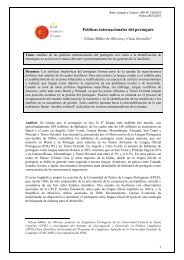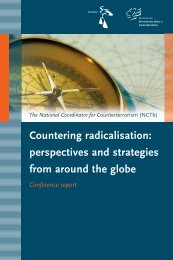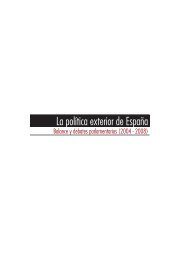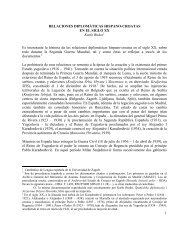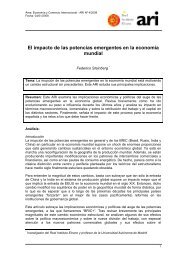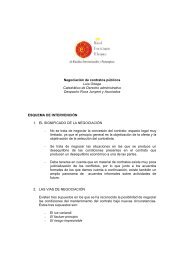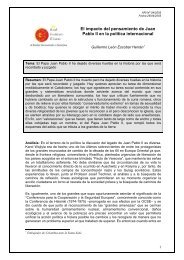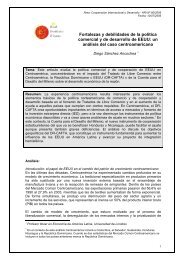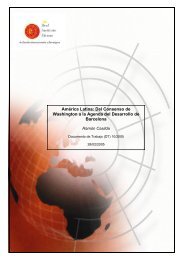Download PDF - Real Instituto Elcano
Download PDF - Real Instituto Elcano
Download PDF - Real Instituto Elcano
- No tags were found...
Create successful ePaper yourself
Turn your PDF publications into a flip-book with our unique Google optimized e-Paper software.
The legitimacy of political partiesThe Latinobarómetro 2006 shows that political parties continue to suffer from a crisis of credibility(although to a lesser extent than in previous surveys) and that the vast majority of people in theregion feel that there can be no democracy without such institutions. One of the main effects of theflurry of elections in Latin America was to reverse the trend observed since 2000, when mostpeople said they would not vote for a political party. In 2006 the percentage of those who say theywould vote for a party rose from 49 to 53%, while those who say they would not dropped from 51to 47%. In my opinion, electoral competition revitalizes the validity of political parties.Close resultsOf the 11 presidential elections, in four countries the results were close (Costa Rica, Honduras,Mexico and Peru), giving rise to complaints and challenges before election authorities and publicopinion. In three cases, (Costa Rica, Honduras and Peru) the dispute was settled throughinstitutional means. But in Mexico, the results were not accepted by the opposition party (PRD),triggering a post-election crisis that left the country with an atmosphere of political instability.Another trend in the region was for there to be delays in counting of ballots and announcement ofwinners by electoral authorities. In Costa Rica, Ecuador, Mexico, Nicaragua and Peru, the countingof votes was slower than usual, and the official announcement of a winner took days, weeks ormonths. The case that stands out most was that of Mexico, where the Electoral Tribunal of theJudicial Branch declared Felipe Calderón of the PAN party to be winner two months after theelection. In Ecuador, the company E-Vote delayed the process: after alleging technical problems, itsuspended the counting when 30% of the ballot still had to be tallied. 20Graph 3. Vote for a Political Party (1996-2006)20 The problems started after polling stations had closed and vote-counting was under way. The TSE hired theBrazilian company E-Vote to carry out a so-called quick count, in which the country would know the result of thepresidential voting accurately, although not officially, around 7 pm on election day, and would know the result of thelegislative election the next day. None of this happened. Late into the night of the election and into the wee hours of thenext day, E-Vote had counted only 70% of the votes in the presidential race, and the results of the legislative votingwere not announced at all. The TSE was forced to annul the contract with this company and execute guarantees.18



